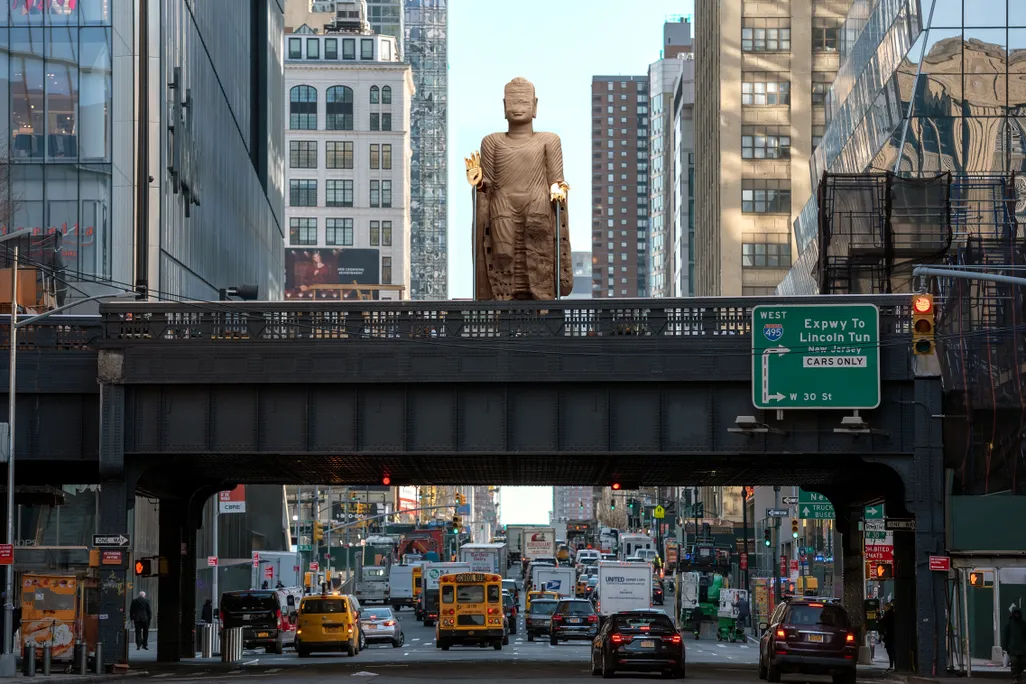You might already be familiar with the backstory of Still Life, a film set in Fengjie County during the construction of the Three Gorges Dam. (The film’s Chinese title, “三峡好人” or “Good people of the Three Gorges,” gives away much more than its English name.) The story takes place in a town soon to be flooded by the rising waters, and warnings painted on the doomed city rise steadily throughout the film.
Fengjie and the Three Gorges Project have entranced director Jia Zhangke for years. He visited Fengjie with a camera first in Dong, a profile of painter Liu Xiaodong. In that film, interviews with Liu are cut with images of Fengjie’s deconstruction, where shirtless men stand perched on the buildings they are demolishing by hand, with sledgehammers and immense effort. Shots like these are repeated almost exactly in Still Life, where, as usual, Jia’s manic movement between documentary and dramatic style is on acute display.

It might seem difficult to stage a film in such a transient, violently transforming setting as Fengjie. The setting poses a narrative problem for the film: how can the plot rise above the stage and stand for itself, without being overcome by it? Why the need to tell a story in Fengjie, when the story of the city itself is already a mesmerizing tragedy?
Jia is known for giving the setting an incredibly wide space in his films; a documentary vibe inflects nearly every one of the scenes in Still Life. He reformulates the narrative “problem” of the setting as a basic premise of the film: How could one continue to live a life without falling victim to the clock, to a life determined by the tempo of the constantly rising water?
The film’s two storylines are exceedingly simple: Han Sanming, a coal miner – played by Jia’s cousin and a veteran of his films – has returned to Fengjie looking for a young (purchased) wife and his daughter, who both left him in Shanxi. Shen Hong — played by Zhao Tao, another Jia Zhangke regular — is looking for her husband, who likewise left her in Shanxi.
Still Life echoes the ultimate and perverse draw of disaster movies
The minimalist scope of the plot gives way to the signature characteristic of Jia’s films, which is enchanting to some and mind-bendingly droll to others: the characters of Jia’s China live peripheral and passive lives, while the world and history happen to them. They cannot make a world that is obviously making them. Still Life offers proof that there is something unique and invariably entrancing about a doomed city. It echoes the ultimate and perverse draw of disaster movies, even if the plot of a typical disaster movie unfolds quickly — unlike Fengjie’s.
The third-phase water level (“156.05 meters”) is painted on the bare skeletons of Fengjie’s buildings, and the only work in Fengjie is demolition, knocking the city down before it’s overcome by water. How could you ever expect to find lost family in such a place?

The only work in Fengjie is demolition, knocking the city down before it’s overcome by water
Shen Hong and Han Sanming probably aren’t worth caring about, or at least, not too much. You watch because it’s Fengjie’s ghost that takes over, as if from a future when the water has risen. Still Life drowns in a particular type of hopelessness against which Hong and Sanming struggle, one perhaps unique to Fengjie, like so much about the story of the Three Gorges Dam.
The city itself, a graveyard of half-demolished buildings, some still with inhabitants and some not, haunts the film without a second’s reprieve. This is a film about places, not people, or perhaps about places without people. Scenes move without a cut from one complete, four-walled room to another, through a wall that has fallen away to reveal a city-scape eerily reminiscent of post-WWII European ex-metropolises, where families emerge from the rubble only to disappear. No one knows where to find Han Sanming’s wife or Shen Hong’s husband. It’s possible they’ve already left.
This is a film about places, not people
It’s common to hear that all of China appears to be under construction, and Still Life makes a weird twist on that idea while bringing attention to the ruin and decay that must accompany anything new. The beat of sledgehammers is the film’s metronome and soundscape, a constant reminder that the water is coming and the city is going. Shen Hong and Han Sanming wander around a place haunted by the ghost of its future, and though they don’t seem to care, the film asks the fundamental question: we know it looks like progress and it sounds like progress, but is it?
***
| Column Archive |
Related:
 New Nowhere: Jia Zhangke’s FenyangArticle Aug 14, 2017
New Nowhere: Jia Zhangke’s FenyangArticle Aug 14, 2017
 Not Just A Guy From Fenyang: Walter Salles’ Portrait of Master Filmmaker Jia ZhangkeArticle Aug 05, 2017
Not Just A Guy From Fenyang: Walter Salles’ Portrait of Master Filmmaker Jia ZhangkeArticle Aug 05, 2017

















